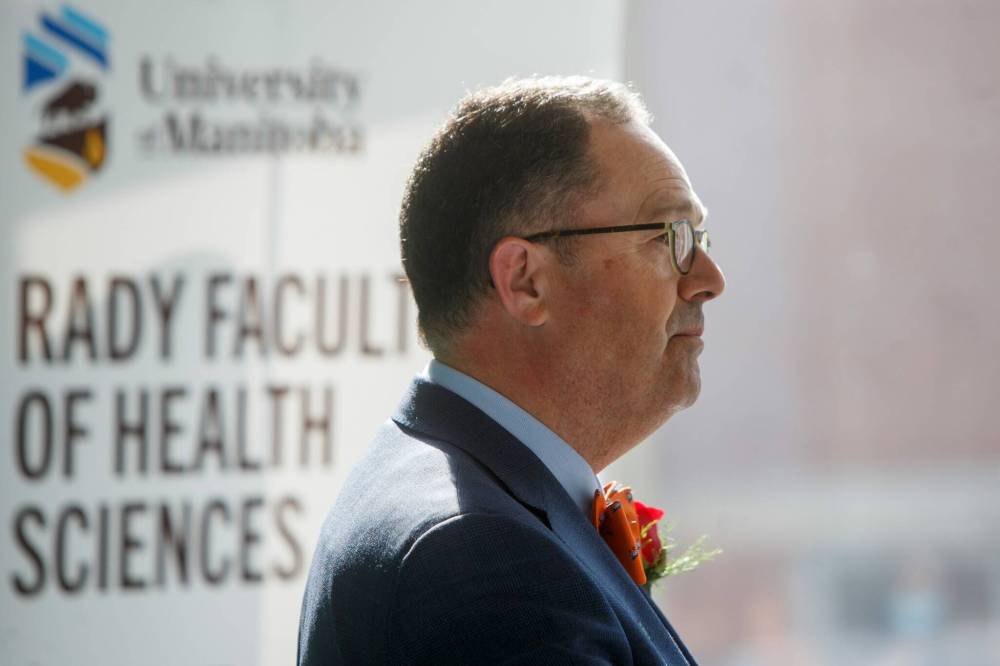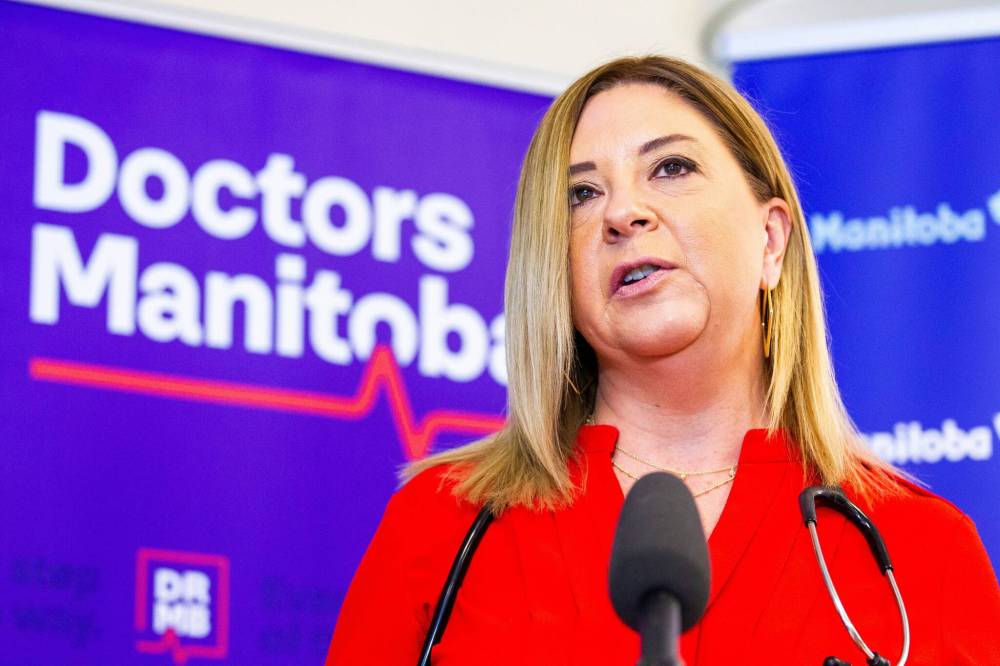U of M seeks to increase intake of medical students
Shortage of health-care professionals prompts expansion of programs
Advertisement
Read this article for free:
or
Already have an account? Log in here »
To continue reading, please subscribe:
Monthly Digital Subscription
$0 for the first 4 weeks*
- Enjoy unlimited reading on winnipegfreepress.com
- Read the E-Edition, our digital replica newspaper
- Access News Break, our award-winning app
- Play interactive puzzles
*No charge for 4 weeks then price increases to the regular rate of $19.00 plus GST every four weeks. Offer available to new and qualified returning subscribers only. Cancel any time.
Monthly Digital Subscription
$4.75/week*
- Enjoy unlimited reading on winnipegfreepress.com
- Read the E-Edition, our digital replica newspaper
- Access News Break, our award-winning app
- Play interactive puzzles
*Billed as $19 plus GST every four weeks. Cancel any time.
To continue reading, please subscribe:
Add Free Press access to your Brandon Sun subscription for only an additional
$1 for the first 4 weeks*
*Your next subscription payment will increase by $1.00 and you will be charged $16.99 plus GST for four weeks. After four weeks, your payment will increase to $23.99 plus GST every four weeks.
Read unlimited articles for free today:
or
Already have an account? Log in here »
Hey there, time traveller!
This article was published 15/04/2023 (973 days ago), so information in it may no longer be current.
THE University of Manitoba is seeking to expand admissions to health-care programs to bolster the ranks of understaffed hospitals and facilities provincewide.
U of M’s latest senate agenda reveals detailed requests to increase intakes for its undergraduate medical education degree and various master’s degree programs in nursing, physician assistant studies, and both physical and occupational therapy.
The focus is on training more future doctors as quickly as possible.
The proposal includes the addition of 15 undergraduate seats for aspiring physicians next year and another 15 the following year, for a total of 140 spots starting in 2024-25.
MIKE DEAL / WINNIPEG FREE PRESS FILES Dr. Peter Nickerson, dean of the Max Rady College of Medicine.
Dr. Peter Nickerson, dean of the Max Rady College of Medicine, said it’s a big jump — the largest of its kind in recent history — but “it’s what’s called for, given the circumstances.”
The respective master’s program admissions targets are slated to grow by 20 (nurse practitioner), 15 (physician assistant studies), 10 (physical therapy) and 10 (occupational therapy) over the coming school years.
The need for growth was determined in consultation with regional health leaders, including chief medical officers and specialty leads, and national and provincial regulatory bodies, according to internal university documents.
“We’re very optimistic. I think there’s a lot of positive energy that we can do our part to try and help. The best way to address needs in Manitoba is to train people who are here in Manitoba and who want to stay in Manitoba,” said Nickerson, a transplant nephrologist at the Health Sciences Centre in Winnipeg.
Roughly 900 candidates, the majority of whom are from Manitoba, apply to U of M’s medical school every year. Between 70 to 75 per cent of graduates choose to do their residencies locally.
Doctors Manitoba is touting the university’s plan to scale up its overall physician-training seats and related spots; the organization’s leader said an expansion is long overdue.
MIKAELA MACKENZIE / WINNIPEG FREE PRESS FILES Dr. Candace Bradshaw, president of Doctors Manitoba.
Dr. Candace Bradshaw indicated the number of doctors graduating from Manitoba’s only medical school has not kept up with annual population growth for upwards of 30 years.
“There’s a record physician shortage right now. We would need 405 more doctors to reach the Canadian average in Manitoba — and that is not even meeting the needs of populations elsewhere,” the family physician said.
Extensive surgical backlogs, reports of wait times surpassing 20 hours for emergency care, and patient challenges finding family doctors are all symptoms of the labour shortage, she said.
Bradshaw said she worries about the long-term consequences of being a U of M graduate in a class of fewer than 70 physician residents when she entered the workforce in 1999. She described her current patient load as double what would be comfortable.
Manitoba’s advanced education department could not confirm Friday whether the province has agreed to fund all of U of M’s health-care program expansions.
“There’s a record physician shortage right now. We would need 405 more doctors to reach the Canadian average in Manitoba — and that is not even meeting the needs of populations elsewhere.”–Dr. Candace Bradshaw, president of Doctors Manitoba
“We have listened to the front-line workers, including nurses and doctors, who have highlighted the need to open up more training capacity within our post-secondary institutions,” a government spokesperson said in a statement.
The spokesperson cited the province’s commitment to increase respiratory therapy graduates, which began in September, and the imminent launch of U of M’s third annual bachelor of nursing intake.
The province recently announced it would provide funding for 80 additional physician-training seats, including 40 new undergraduate seats — 30 of which U of M indicated it has capacity for — and 10 additional spots for a one-year international medical graduate program.
Provincial dollars have also been set aside for 30 new seats for internationally educated medical students to complete a two-year postgraduate medical education program.
While noting the looming admissions changes will make “a big dent,” Bradshaw pointed out incoming undergraduates will not practise medicine for at least seven years.
Until then, it’s critical to focus on retaining working doctors and recruiting enough of them to educate and support the coming surge in local physicians-in-training, she said.
maggie.macintosh@freepress.mb.ca

Maggie Macintosh
Education reporter
Maggie Macintosh reports on education for the Free Press. Originally from Hamilton, Ont., she first reported for the Free Press in 2017. Read more about Maggie.
Funding for the Free Press education reporter comes from the Government of Canada through the Local Journalism Initiative.
Every piece of reporting Maggie produces is reviewed by an editing team before it is posted online or published in print — part of the Free Press‘s tradition, since 1872, of producing reliable independent journalism. Read more about Free Press’s history and mandate, and learn how our newsroom operates.
Our newsroom depends on a growing audience of readers to power our journalism. If you are not a paid reader, please consider becoming a subscriber.
Our newsroom depends on its audience of readers to power our journalism. Thank you for your support.



